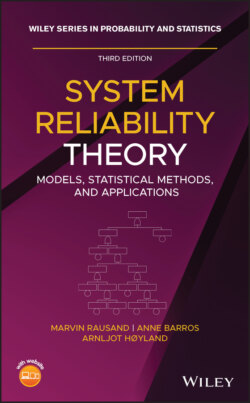Читать книгу System Reliability Theory - Marvin Rausand - Страница 153
Additional Types of Failures
ОглавлениеWhen an item fails, the failure is often claimed to be caused by the control of the item, the input/output to/from the item, or misuse of the item. These causes are usually outside the boundary of the item and not something the manufacturer of the item can be responsible for.
Control failures. A control failure is an item failure caused by an improper control signal or noise, that is, due to factors outside the boundary of the item. A repair action may or may not be required to return the item to a functioning state. Failures caused by inadequate, or not followed operating procedures may also be classified as control failures.
Input/output failures. An input/output failure is a failure caused by inadequate or lacking item inputs or outputs, that is, due to factors outside the boundary of the item. For a washing machine, the washing service is stopped due to inadequate or lacking supply of electricity, water, or detergent, or due to inadequacies of the drainage system. Input/output failures will stop the service provided by the item but will usually not leave the item in a failed state. The item may not need any repair after an input/output failure. Input/output failures tell very little about the reliability of the item as such.
Misuse/mishandling failure. A misuse/mishandling failure is a failure that occurs because the item is used for a purpose that it was not designed for, or is mishandled. The mishandling may be due to a human error or a deliberate action such as sabotage. Some laws and standards (e.g. EU‐2006/42/EC) require that foreseeable misuse shall be considered and compensated for in the design and development of the item, and be covered in the operating context of the item.
The categories of failures listed above are not fully mutually exclusive. Some control failures may, for example, also be due to systematic causes.
